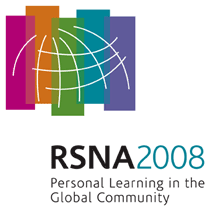
Abstract Archives of the RSNA, 2008
LL-GI4304-L08
Turbulent Portal Flow after Living Donor Liver Transplantation: Prevalence, Associated CT Findings, and Clinical Significance on Long-term Follow-up
Scientific Posters
Presented on December 3, 2008
Presented as part of LL-GI-L: Gastrointestinal
So Jung Lee, Presenter: Nothing to Disclose
Kyoung Won Kim MD, Abstract Co-Author: Nothing to Disclose
Woo Kyoung Jeong MD, Abstract Co-Author: Nothing to Disclose
Gi Won Song, Abstract Co-Author: Nothing to Disclose
Shin Hwang MD, Abstract Co-Author: Nothing to Disclose
Sung Gyu Lee MD, Abstract Co-Author: Nothing to Disclose
To determine the prevalence of turbulent flow of portal vein(PV) after living donor liver transplantation(LDLT), to describe associated CT findings, and to evaluate clinical significance on longterm follow-up.
Among 101 consecutive patients who underwent LDLT between January and May 2004, we found 87 patients in whom longterm follow-up(> 2 years) with CT and DUS was available for review. Of them, eight patients who underwent PV stenting were excluded, and the other 79 constituted the study population. They underwent LDLT using right lobe in 37, left lobe in 19, and dual grafts in 23, producing a total of 102 PV anastomoses. PVs were evaluated for postanastomotic turbulent flow, and 102 PVs were classified into either turbulence or non-turbulence group. On 1st postoperative CT scans obtained within a week of LDLT, we measured calibers of the PV anastomosis(ØA) and maximal dilated postanastomotic PV(ØMPA), and calculated dilatation-to-stenosis ratio(ØMPA/ØA). We also evaluated CT scans for degree of splenomegaly and variceal engorgement. Two-year follow-up CT scans were reviewed in a similar manner. Unpaired t-test and Fisher’s exact test were performed to explore if there were differences in CT parameters and changes on follow-up, bewteen turbulence and non-turbulence groups.
On DUS, turbulence was noted in 26(27%) of 102 PVs. On first CT, ØA was significantly smaller and ØMPA as well as ØMPA/ØA was significantly larger in tublulence group than in nonturbulence group(p<.01). The ØMPA/ØA on follow-up CT and the difference of ØMPA/ØA between 1st and follow-up CT scans were also significantly larger in tublulence group than in nonturbulence group(p<.01). On follow-up, progressive splenomegaly and variceal engorgement were more frequent in turbulence group than in non-turbulence group(p=.01,=.03).
Turbulent PV flow is a frequent DUS finding after LDLT, and is associated with mild PV stenosis and poststenotic dilatation. Patients with turbulent PV flow may rarely have progressive splenomegaly and variceal engorgement as well as further dilatation of intrahepatic PV on longterm follow-up.
Turbulent portal flow is a frequent DUS finding after LDLT, associated with mild PV stenosis and rarely with progressive splenomegaly and variceal engorgement on longterm follow-up.
Lee, S,
Kim, K,
Jeong, W,
Song, G,
Hwang, S,
Lee, S,
Turbulent Portal Flow after Living Donor Liver Transplantation: Prevalence, Associated CT Findings, and Clinical Significance on Long-term Follow-up. Radiological Society of North America 2008 Scientific Assembly and Annual Meeting, February 18 - February 20, 2008 ,Chicago IL.
http://archive.rsna.org/2008/6021839.html

